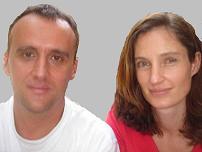The real end game in home automation


It's keeping us in our homes. (Marc Fleury and his lovely wife recently left Atlanta, my hometown, for Spain. The picture is from his blog.)
We're getting older, the world's getting colder. There aren't going to be enough workers available to care for us when we get into our 70s and 80s.
Meanwhile the risk of contracting some chronic condition, like Alzheimer's, rises with age. The mistakes we made in middle-age come back to bite us.
The answer is home automation. Not just to run our TVs, either. But to manage us in our old age.
The problem is that many of these applications are medical in nature. Heart monitoring. Monitoring against dementia symptoms. Checking blood sugar levels and warning us to take action.
Solutions for these individual problems are emerging, but they are mainly one-off. They are not integrated. The designers don't consider standards, don't think about working with other networks. They just want FDA approval.
Medical device approvals are necessary, but regulators should not ignore the benefits of integration, not only for hospital and medical office systems but for home symptoms as well.
Thus the same network that runs your burglar alarm and your TV could one day let you age in place, even keep working, all linked to the same WiFi system you may be using to read this.
So along with promise there is also urgency in home automation, in the work of Fleury and others to create standards for building an Internet of things around us.
It's a story that should not be ignored.